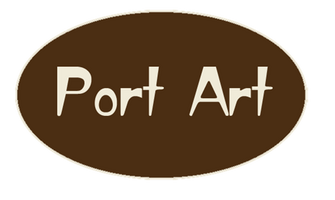Book a FREE Online Art Consultation
Subscribe -Join our Members list for updates, offers & articles
Join our member list(link above) to get up to 50% off over Black Friday madness
Whoa !! This could open a Pandora's box of controversial conversations in any secondary or tertiary art class or group, let alone discussion undertaken in a purely philosophical context.
Throughout time, philosophers like Plato, Aristotle, Socrates, and Kant, among others, endlessly questioned the meaning of art. Eventually, these discussions evolved and digressed. For some scholars, such as Kant, the sciences and the arts could be distinguished by seeing science as representing the domain of knowledge and the arts as representing the domain of the freedom of artistic expression. Einstein would have argued, I am sure, that without creative thinking, many of his proven theories (which became common scientific knowledge) could never have even been conceived.
“It is the supreme art of the teacher to awaken joy in creative expression and knowledge.” “The most beautiful thing we can experience is the mysterious. It is the source of all true art and all science.
"The greatest scientists are artists as well.”
__________Albert Einstein
For the purpose of this article, I must first declare that what you read from now on is uncategorically coloured by my own biased viewpoint on the subject of ‘What is Art?’(in particular what is visual art?). So it should be, as I cannot very well express someone else’s views.
Even though there are as many definitions as there have been artworks created, we could just consider the general consensus that art is the purposeful creation of something beautiful or meaningful. (For me the adjective ‘skilful’ needs to be included, but this then might exclude much of what we see today, so it is easy to see how inflamed these conversations could get).
___________________________________________________________________________________
Here is an excerpt from Dictionary.com
The term “art” is related to the Latin word “ars” meaning, art, skill, or craft.
art (contemporary definition)
[ ahrt ] noun
the quality, production, expression, or realm, according to aesthetic principles, of what is beautiful, appealing, or of more than ordinary significance.
The class of objects subject to aesthetic criteria; works of art collectively, as paintings, sculptures, or drawings:a museum of art; an art collection.
a field, genre, or category of art: Dance is an art.
The fine arts collectively, often excluding architecture: art and architecture.
any field using the skills or techniques of art: advertising art; industrial art.
The definition of visual art (Western) has generally fallen into three categories: representation, expression, and form.
* While representational art still continues today, it is no longer the only measure of value in art.
* Expression first became a more important part of the artistic process during the Romantic movement, with artwork expressing an emotion or feeling, as in the sublime or dramatic. The viewers’ emotional response became much more important, for the artwork was intended to evoke an emotional response. Artists today continue to aim to connect with and evoke responses from their viewers. Sometimes is it political, sometimes morose, and not always coming from a place of positivity or beauty.
* Around the beginning of the 1900s, formal qualities became particularly important when art became more abstract, and the principles of art and design (balance, rhythm, unity, contrast, harmony, variety, proportion) became even more essential to define and assess art.
_______________________________________________________________________________
Claude Monet called his major installations of lily paintings his "Grandes Decorations”, so it is clear that the goal of re-creating the feeling of nature’s great beauty was his entire focus.
Throughout history, the reasons for artistic endeavours have varied greatly. From the negative hand print of the caveman, which could have been anything from a form of primitive signature or even a home decoration, we simply can only guess.
They were, without doubt, telling stories though, when they portrayed their hunted food supply.
Some modern artists create for the reason that Monet did, to celebrate natural beauty, some tell stories, others aim to express feelings in all manner of approaches, while many more come up with their own version of what they call visual art, be it decorative or meaningful, be it ‘ good' or ‘ bad'. The bottom line is always that the definition and the value of an artwork is in the eye of the beholder. (Moreover, it is associated with the perception and individual life and art-related experiences of the beholder.)
_____JW
Book a FREE Online Art Consultation
Subscribe -Join our Members list for updates, offers & articles
Join our member list(link above) to get up to 50% off over Black Friday madness
